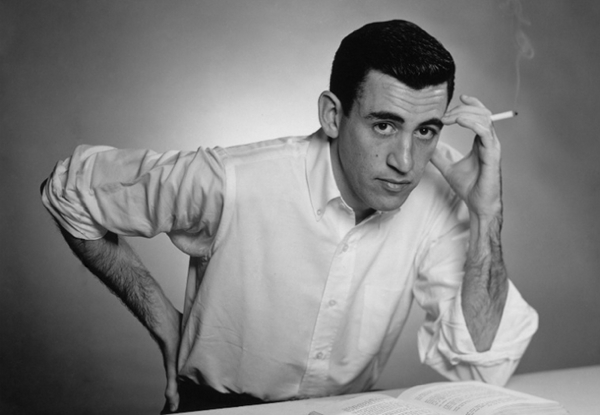Movie review by Greg Carlson
Probably the weirdest and most disappointing thing about Shane Salerno’s documentary “Salinger” is the lack of interest shown in the words and ideas of the popular author’s literary output. Sure, the movie follows a familiar script that makes connections between “real life” sources and inspirations for well-loved characters and events, but the desperate autobiographical sleuthing does its enigmatic subject no favors, focusing on the “mystery” of J.D. Salinger instead of anything resembling a thoughtful consideration of the man’s talents. The movie is enough to send disciples back to their dog-eared paperbacks. I daresay “old Jesus probably would’ve puked if He could see it.”
If the superficial treatment of Salinger’s oeuvre fizzles, so too does Salerno’s ill-advised decision to stage reenactments of Salinger pounding away at a typewriter, often in front of a huge movie screen filled with images that speculate on everything from post-traumatic stress disorder to the failure of Salinger’s marriage to Claire Douglas. The effect is cheap, disheartening, and, if you’ll pardon the easy swipe, phony as hell. The use of a mute actor impersonating Salinger distances us from the charm, warmth, and humor of the fiction, stirring up instead the uglier tendencies toward the writer’s irritability, paranoia, and seclusion.
While some of the talking heads are people who knew and interacted with Salinger, too many of the interview subjects belong in the desperate stalker or eager opportunist categories. Salerno gives Joyce Maynard way more screen time than necessary to articulate her points about Salinger’s pattern of fixating on very young women and girls. A grim section highlighting the ghastly crimes of Mark David Chapman, John Hinckley Jr., and Robert Bardo would be more at home on an episode of some lurid true crime cable series. In contrast, a too-brief discussion about William Shawn’s decision to overrule the “New Yorker” fiction editors who rejected “Zooey” hints at a more insightful and discerning narrative.
Salinger fanatics and completists will discover a handful of titillating material, including a very short, previously private motion picture film clip of the author made during his World War 2 service, several rarely-seen photographs including the only known image of Salinger at work on “The Catcher in the Rye,” and a final revelatory coda outlining the possibility of forthcoming publications. Claiming that “information was provided, documented, and verified by two independent and separate sources” (whatever that means), Salerno describes a novella informed by Salinger’s work as a counter-intelligence agent, a love story based on Salinger’s relationship with his first wife, a treatise on the Vedanta religion, and a full account of the Caulfields, including a retooled version of “The Last and Best of the Peter Pans.”
Most tantalizing of all: five new Glass stories, purportedly focused on Seymour, and a “detailed genealogy” of the family. Salerno claims the first of the tales sees Seymour and Buddy “recruited at a party in 1926 for the children’s quiz show ‘It’s a Wise Child’.” Less hopeful is the note that these stories are “saturated in the teachings of the Vedanta religion,” a deep fear long held by Salinger followers disillusioned by the author’s later tendency toward theological didacticism at the expense of rich and involving storytelling. Salinger biographer Paul Alexander summarizes this shift, saying of “Hapworth 16, 1924,” “It’s long on tone and absolutely devoid of plot.” Salerno’s movie doesn’t have much of either, so here’s hoping that we might get to read some new Salinger in the near future.
